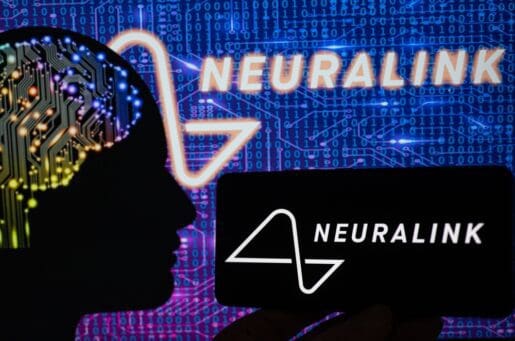Bioethics Forum Essay
Alzheimer’s Disease, Biomarkers, and Suicide: Why We Need to Think About All Three Together
Recently, I spoke with a seasoned health care reporter who was interested in Alzheimer’s and biomarkers because of his own family’s history of this disease. He started by asking, “Why would anyone not want to take this test?” – to “know,” so they could “plan” – and then soon acknowledged that he was not at all sure whether he himself would want to live with this knowledge, for years or decades, before the onset of symptoms.
This reporter, like other reporters who work in or follow policy in states that have provisions for what is called physician-assisted suicide, or physician-assisted death, or physician aid-in-dying (there is no perfect or value-neutral term, and policy and people in states where this practice is legal may use more than one term to describe it), was aware that an Oregon-style provision requires the act of self-administering a lethal dose of medication to be a “voluntary” act. Therefore, a person nearing death due to Alzheimer’s would not have equal access to this end-of-life provision because this person would have already lost the capacity to make a voluntary decision, and also to self-administer. While discussions about “loss of capacity near the end of life” tend to focus on the last hours, days, or perhaps weeks of life, when a person is dying of cancer or heart disease, loss of decision-making capacity and other cognitive functions in a person with Alzheimer’s may occur years before the person’s death.
Talking about end-of-life decision-making solely in terms of the right to refuse life-sustaining treatment can also fail to grasp the situation of the person with Alzheimer’s, or that person’s surrogate decision-maker, because there may be nothing to “stop” – unless the person has a life-threatening comorbid condition. Surrogate decision-makers have written about the challenge of making decisions on behalf of a loved one with early-stage Alzheimer’s when this person develops a comorbid condition. Should the surrogate follow the cardiologist’s advice and implant a defibrillator so the patient will live longer, experiencing progressive cognitive deterioration due to Alzheimer’s, the fate she has long dreaded? Or should the surrogate, in accordance with the patient’s general preferences, refuse the device, potentially shortening the patient’s life by years? Or should the surrogate choose to have the device implanted now and hope there will be no future conflict about deactivating it at some future date, that no physician will perceive that treatment refusal as “killing the patient”?
So how do we avoid blaming people with Alzheimer’s for getting the wrong terminal illness, whose long trajectory and lack of treatment does not fit neatly into our existing law and policy concerning treatment refusal, hospice eligibility, or state-level provisions for ending one’s own life? Commentators in bioethics and health law have outlined thoughtful proposals on using advance directives to provide instructions on voluntary stopping of eating and drinking (VSED) with palliative care for symptom relief in the context of Alzheimer’s, including when in the Alzheimer’s trajectory these instructions should be implemented, and also on whether Netherlands-style “legalized death assistance” should be an option for people with Alzheimer’s, given that Oregon-style provisions are legally inaccessible. There is a strong suggestion that the baby boom generation, now caring for parents with Alzheimer’s, wants something different for their own end-of-life options, even if we are not yet sure what that menu of options should include or whether we can reach consensus on it in the U.S.
The likelihood that validated biomarkers for Alzheimer’s will soon begin to affect the lives of people with decision-making capacity, before the onset of symptoms, raises immense moral questions that challenge the metaphors traditionally used in talking about what we should do for a person with Alzheimer’s. These metaphors presume a person who is cognitively incapacitated and whose current preferences (the “now-self”) do not match what this person, when capacitated, envisioned he or she would want in the future (the “then-self”). Pitting two selves against each other has not solved this problem. And yet the prospect of taking a test, getting an early diagnosis, becoming an Alzheimer’s self, “planning ahead” for certain incapacity, does not make thinking about Alzheimer’s – specifically, about myself with Alzheimer’s – any easier.
The healthy person who has just received an “early” diagnosis of Alzheimer’s, based on biomarkers rather than clinical signs and symptoms of cognitive deterioration, will not be thinking only of his or her own “future self” and of a fate that he or she may want, very much, to avoid. This person will also be thinking about relationships, about money, about memories (not just the loss of memory, but also the memories of others – who will remember me and what will they remember about the end of my life? — and about his or her idea of a “best self.”
How will that sense of who I am at my best, whether in relation to others, or to work that gives meaning, or to pursuits that give pleasure, be shaped by the chronicle of a death foretold, in the form of a biomarker result? Will my thoughts and fears about this specific end direct me to contemplate some other end, including suicide? Or will I hope that I will develop some other life-threatening condition and refuse treatment to avoid the end I fear more? We should not abandon people who receive positive biomarker results or contemplate taking a diagnostic test for Alzheimer’s to wrestle with these questions alone.
As a reliable predictive test for the most common form of dementia becomes a reality, with no effective treatment yet in the picture, we will need to review our longstanding legal, ethical, medical, and social consensus about end-of-life care, and consider where the realities of Alzheimer’s, and therefore the interests of people with Alzheimer’s, have been overlooked. We will also need to consider what we owe this population, through law, public and organizational policy, clinical practice and education, and much better ways to organize and pay for care that now largely falls largely on unpaid family members. We will need to think about Alzheimer’s, biomarkers, and suicide. As noted, Oregon-style legal provisions to date have excluded people who lack decision-making capacity. The legal and ethical arguments permitting VSED with symptom relief, including advance directives concerning VSED in the Alzheimer’s context, are still not well-known beyond palliative care specialists (see Menzel and Chandler-Cramer and Rebecca Dresser). While VSED is legally, ethically, and medically different from Oregon-style provisions in significant ways, we should be honest about how a voluntary decision to hasten death through dehydration is related to a voluntary decision to bring about death, mindful that the person contemplating an Alzheimer’s test, or facing a diagnosis based on biomarkers, may perceive little difference, and derive only cold comfort.
Nancy Berlinger is a research scholar at The Hastings Center and the first author of the revised and expanded edition of The Hastings Center Guidelines for Decisions on Life-Sustaining Treatment and Care Near the End of Life. A version of this commentary originally appeared on the website of the Center for Research on Ethical, Legal & Social Implications of Psychiatric, Neurologic & Behavioral Genetics.
Posted by Susan Gilbert at 07/07/2014 11:10:32 AM |












